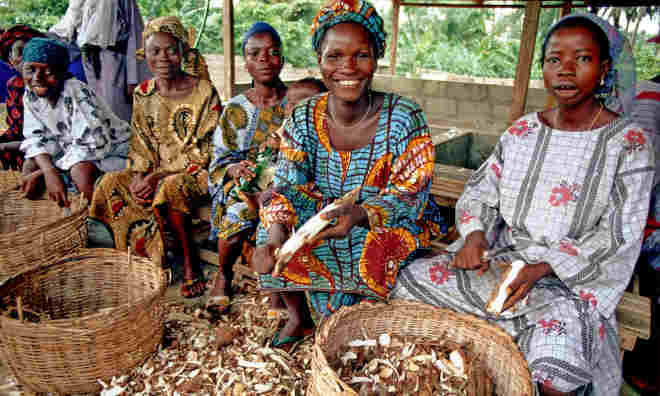During the recent Plant Virus Epidemiology Symposium held in Arusha, Tanzania, leaders in science and agriculture discussed how plant viruses are jeopardizing food security in sub-Saharan Africa. The Cassava Brown Streak Disease, for example, and Cassava Mosaic Disease, are ravaging cassava crops throughout Eastern Africa.
Cassava, also known as yuca, is a tuber, its roots rich in carbohydrates. It is a staple crop for much of Africa because it grows easily in most areas. Alfred Dixon, a cassava breeder at the International Institute of Tropical Agriculture, notes that “cassava is to the African peasant farmer what rice is to Asian farmers, or what wheat and potatoes are to the European farmers.”
Brown Streak Disease riddles the white flesh of the cassava with brown rotted spots, making it inedible. Loss of a crop that, according to the U.N. Food and Agriculture Organization, is the third most important source of calories in developing countries, could be devastating, like the potato blight was to Europe in the mid-1800s. Farmers who have been educated on spotting the diseased crop have been asked to burn their crops so they can get one or two clean crops before Brown Streak infects another crop. But burning crops can lead to lower incomes and food security. What are farmers supposed to do when Brown Streak strikes?
This is where AVRDC-The World Vegetable Center steps in. Founded in 1971, AVRDC’s mission is “alleviating poverty and malnutrition in the developing world through increased production and consumption of nutritious and health-promoting vegetables.” AVRDC saw that developing countries were relying too much on staple crops like cassava and that a variety of micronutrient-filled vegetables would help fight off the threats of famine and malnutrition.
Through research and careful breeding, the AVRDC has developed a vast variety of vegetables that grow well in the sub-Saharan climate. The Center aims to include farmers in the research, as well as educating them in the field about the importance of planting and growing a variety of vegetables. The more that farmers have access to and learn to grow a diverse amount of crops, the more profitable they can be.
Farmers who have been faced with burning their staple cassava crops can turn to the Center for seed kits to help ensure that they and their families are not at risk of malnutrition. Disaster seed kits and home garden kits, for example, give farmers access to fast-growing, nutrient-rich crops for 100 square meters of land. The home garden kits, created to feed a family of 8 for a year, provide 17 varieties of vegetables to ensure healthy diets at home.













